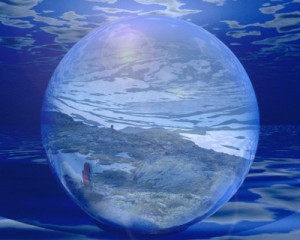Creation is a hard thing to define, for in order to create, we must also destroy. Whether we erect a building, or create intellectual property we are both creating new conceptions and destroying old perceptions. Ideas are cheap, I came up with more than a couple just writing this, but without the action of rendering ideas in the physical world, they are often all too fleeting, and they play little role in the drama of the universe. Those ideas that become conceptions are a little more. They seem important: “Maybe with this conception, my existence will be enriched.” A little more consideration is devoted and the idea becomes more than a fleeting thought. If there is something to gain, then perhaps the conception is worth developing.
Often, it seems that people have a hard time coming up with ideas that are worth conception and development, but that is simply a matter of opinion. Cosmically, how can we say whether one idea has more validity than another? That which we don’t know, far outstrips that which we do and – I don’t mean to sound too nihilistic here – how do we really know anything for sure? Well, we don’t, but we have to operate within the parameters we have, and that is why we limit the ideas that we conceive. Our creative process is hamstrung by our mental and social conditioning. We think of things and say to ourselves “That’s crazy” or, “That won’t work”. This is a social defense mechanism that keeps us from doing things that others would view as insane. In order to reach the prime realm of creativity, all mental blocks must be removed, you must exclude nothing from the process of conception. Let all ideas flow through you, then perhaps you might select the best one for development.
When I conceive an idea, I am unlimited by practical concerns, but as development of that conception begins, practical questions must be answered. “Why am I doing this”, “How am I going to do this” etc… Again, we must operate within the environment we have been given, and if practicaity is not taken into account, than our conceptions are destined to remain powerless ideas, fleeing on the winds of the universe. It’s a delicate balance. Think outside the box, but exist within it. Go where no one has ever gone before, but don’t get lost. The ideal creative process is a delicate balance between unlimited thought, and limited action. There are no limits to what we can conceive, but development in the physical world is another matter. I can think about communicating telepathically with all of humanity, but I can’t actually do it, so instead I transmit my ideas to a website, and put it out there for most of humanity to see.
There is a duality present in the nature of creativity, but there is a balance point in the middle, that we must inhabit. We are the instrument that bridges the gap between the impossible and the possible. When creating, I imagine myself as the conduit that brings new, impossible, amazing conceptions into the realm of reality as we know it. I strive to translate the cosmic totality into human terms. This visualization may seem a bit grandiose, but as a graphic designer, the richness of my existence is determined by the breadth of my creativity, so I must constantly expand my perception in order to stay competitive. An idea is only new once.
Even if you aren’t in the design profession, your existence is often determined by your creativity. Problem solving is an every-day part of life, and the best, simplest, and most creative solutions will often make your existence more fulfilling. I find that using your creative muscle can tone it and strengthen it just like your physical body. The more you conceive and create, the better you get at it. Once you expand your perception to a certain extent, you will always possess that territory and your perception can only become bigger. As long as you don’t contract within yourself, your creative territory will continue to expand and the things that you create will continue to improve.
tend to think outside the box. Sometimes, this gets me in trouble. I have an odd tendency to come up with absolutley fantastic ideas, ground-breaking ideas that will blow minds and change the world. Then, I come back to earth, and the practical concerns begin taking their toll. Logistics drag my idea down. Production limitations and rendering issues seem to degrade my idea into something altogether less than what I conceived. But, in the end, I usually have an effective solution. My opinion, when it comes to ideas, is that there are few truly revolutionary concepts that will reach their full potential in the real world. It seems that change, even the most momentous change is brought about by simple, effective ideas that compound over time, not that one ground-shaking new thing.
When thinking, conceiving, and creating, I initially shoot for the big one: the perfect solution, but I’m happy if I end up with an effective one. During projects where I got caught up on perfection, and I refused to let go of my grand vision, the final product inevitably disappointed me. Rather than accept the physical limitations of reality, I refused to operate on a practical level. I tried to build too big a monument, with too little material, and my monument collapsed.
Experience has tought me that the balance of seemingly crazy idea generation, coupled with a practical plan of execution is the most beneficial to a superior solution. The synergy between eccentric creativity and pragmatism is essential for ideal creation.
SEO >>>

